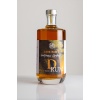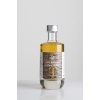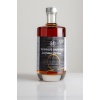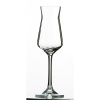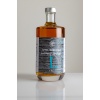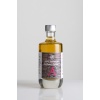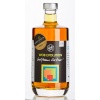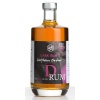
Table of Contents
- Why “Elixirs, Aquavit & Absinthe Rediscovered” Matters
- Herbs, Botanicals and the Meaning Behind the Term “Drugs”
- The WOB Elixir: Origins, Flavor and Serving Suggestions
- Aquavit: Tradition, Techniques and Pairing
- Anise Spirits: Pastis, Ouzo, Raki — The Wider Family
- Absinthe: Myths, Rituals and the Louche
- The Science of the Louche: Anethole and Opalescence
- Absinthe as a Palate Cleanser — A Practical Tip
- Practical Buying, Storage and Serving Notes
- Pairings and Occasions for Each Spirit
- Our Favorite Rituals and Serving Sequences
- Where to Find These Bottles
- FAQ — Frequently Asked Questions
- Conclusion — Embracing Elixirs, Aquavit & Absinthe Rediscovered
Elixirs, Aquavit & Absinthe Rediscovered — A Journey Through Herbs, Aromas and Classic Rituals
Welcome to our exploration of Elixirs, Aquavit & Absinthe Rediscovered, where we uncover how traditional herbs and botanicals transform into spirits that awaken the senses. In this piece, we build on the insights shared by Inside World-Spirits TV — Englisch Channel and the WOB Story to bring you a hands-on, conversational guide to the flavors, history, and perfect preparation of three captivating categories: our semi-bitter WOB Elixir, a classic aquavit, and the legendary anise spirits culminating in absinthe.
Elixirs, Aquavit & Absinthe Rediscovered is not just a title — it is the lens through which we examine the intersection of apothecary tradition and modern distillation. We’ll walk through origins and definitions, tasting notes, serving techniques, myths, and practical tips so you can enjoy these spirits with confidence and delight. Along the way, we’ll include snapshots from moments that inspired us and practical imagery to help illustrate key points.
Why “Elixirs, Aquavit & Absinthe Rediscovered” Matters
When we say Elixirs, Aquavit & Absinthe Rediscovered, we mean a revival of appreciation for botanically rich spirits that sit at the crossroads of flavor, culture, and ritual. These are not “drugs” in the addictive sense; rather, they are preparations of dried herbs and botanicals—akin to how apothecaries once blended healing tinctures. We want to reintroduce them as beverages with depth and purpose, worthy of thoughtful consumption.
Why revisit these spirits now? Two reasons. First, modern craft distillation and renewed interest in botanical drinks have given us more nuanced, high-quality bottles than ever before. Second, we live in a moment where flavor exploration and ritualized drinking (serving, pairing, ceremony) enrich everyday life. Elixirs, aquavit, and absinthe are perfect for that: aromatic, layered, and often best enjoyed when prepared with intention.
Herbs, Botanicals and the Meaning Behind the Term “Drugs”
It’s crucial we clarify language before diving deeper. In older and technical use—especially in certain European contexts—the word “drugs” can refer to medicinal herbs and botanicals. That is the sense we adopt here: dried plants prepared for their beneficial or flavor-bearing compounds. This is distinct from the modern colloquial meaning of addictive substances.
Elixirs often trace their lineage to apothecary recipes. Distillers borrowed the concept: a concentrated, botanical-rich spirit or tincture that offers a complex taste profile. When we describe Elixirs, Aquavit & Absinthe Rediscovered, we celebrate how distillers reinterpret historical herbal formulations into contemporary sipping and mixing spirits.
What Botanicals Bring to the Table
- Citrus — Bright, zesty top notes that cut through sweetness and bitterness.
- Mint & Cooling Herbs — Provide freshness and lift, especially in elixirs.
- Caraway & Dill — Central to aquavit; they create savory, bread-like and herbaceous tones.
- Anise & Fennel — Dominant in pastis, ouzo, raki and absinthe; they offer sweet, licorice-like aromatics.
- Other Bittering Botanicals — Gentian, wormwood, and other bitter herbs add structure and length to elixirs and certain bitters.
The WOB Elixir: Origins, Flavor and Serving Suggestions
Our WOB Elixir began as a direct inspiration. While in Belgium we encountered a traditional “elixir” product that captured our imagination. We decided to create our own: semi-bitter, intensely fresh, and aromatic—packed with citrus and peppermint. These flavors make it wonderfully invigorating and versatile.
The WOB Elixir balances bitterness and freshness. The citrus notes sit on top, giving immediate brightness. Mint and cooling aromatics follow, providing lift and a crisp finish. The bitterness is restrained—enough to be characterful, but not overwhelming. This makes the elixir ideal for both sipping and mixing.
How We Prefer to Enjoy the WOB Elixir
- With Tonic: One of our favorite ways is to treat the elixir like a botanical gin. Mix it with a premium tonic, add ice, and garnish with a strip of citrus peel. The tonic tempers bitterness while highlighting the citrus-mint duo.
- Straight with Ice: In chillier months we enjoy the elixir neat over a large ice cube. This keeps the drink centered and allows the botanicals to slowly open as the ice melts.
- Straight Up: For the purist, a small measure served neat (straight up) rewards those who want the full, undiluted botanical experience.
We find these serving options show the versatility of elixirs: they can be both a mixer and a contemplative sipper. During colder months, the citrus and mint can even evoke festive notes, making the WOB Elixir a companion for holiday moments.
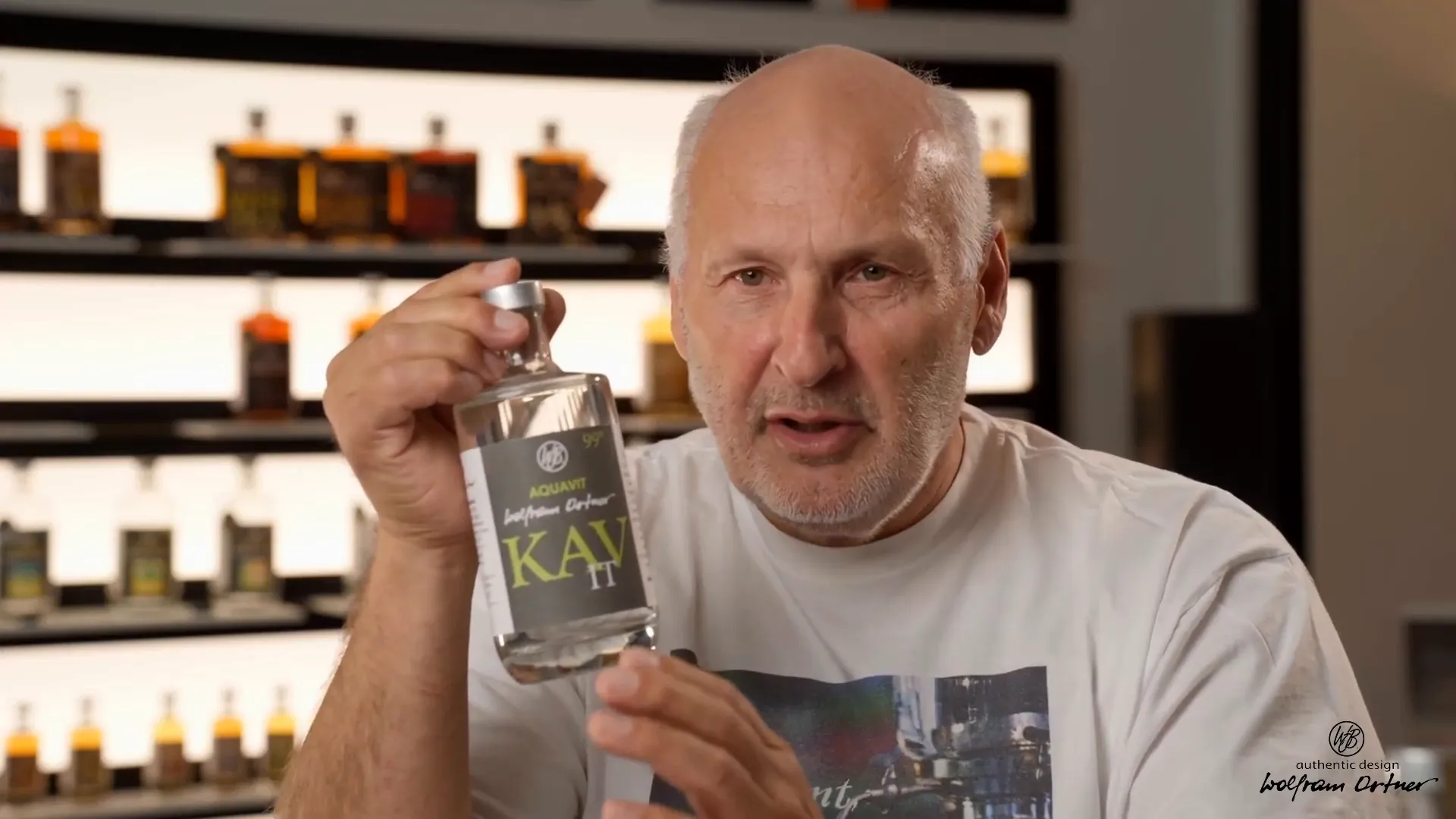
Aquavit: Tradition, Techniques and Pairing
Aquavit is a spirit steeped in Northern European tradition. Its identity is anchored by two herb signatures: caraway and dill. In the case of the WAB de Cavit, these botanicals are harmonized in a classic profile—savory, herbaceous, and balanced. That is what makes aquavit such a reliable partner for hearty, flavorful cuisine.
Tasting Notes and Character
A good aquavit offers savory notes of caraway’s anise-like warmth and dill’s fresh, grassy lift. There is often a bread-like, earthy undertone from caraway and sometimes citrus or peppery hints from supporting botanicals. The result is a spirit that can cut through fatty dishes and complement delicate fish.
Food Pairing: Where Aquavit Shines
- Smoked or Fresh Salmon: Real, sustainably caught salmon, when paired with aquavit, creates a canonical Scandinavian match. The herbaceousness of the spirit complements oily fish and elevates simple preparations.
- Roast Pork: A perfectly roasted pork with crackling benefits from the savory clarity of aquavit. The spirit refreshes the palate between rich, fatty bites.
- Bitter Mushroom Dishes: Earthy mushroom flavors and umami pair nicely with aquavit’s caraway base, balancing and enhancing the dish’s depth.
We stress the importance of ingredient quality in the dish: real salmon—not farmed—and a carefully roasted pork are the kinds of foods that allow aquavit’s nuances to flourish.
Anise Spirits: Pastis, Ouzo, Raki — The Wider Family
The family of anise spirits includes pastis (France), ouzo (Greece), raki (Turkey and Balkans), and absinthe (a special, more complex relative). Pastis is widely known in France and is usually served diluted with water. Its base is aniseed, often supported by other aromatics like licorice root, fennel, and citrus.
When we explore Elixirs, Aquavit & Absinthe Rediscovered, anise spirits are essential because they show the power of a single botanical—anise or anethole—to define an entire style. Anise gives sweet licorice aromas and a velvet-like mouthfeel, especially when louched (diluted with water), which creates a dramatic opalescence.
Serving and Enjoyment Tips for Anise Spirits
- Traditional Dilution: Serve with cold water and ice. The recommended ratios vary—anywhere from 1:1 up to 1:3 (spirit to water)—depending on strength and personal preference.
- Slow Addition of Water: Adding chilled water slowly encourages controlled louche and opens the aroma progressively, making the ritual part of the enjoyment.
- Pairing with Savory Meze or Tapas: The brightness of anise cleanses the palate and pairs well with salty, spicy finger foods.
Absinthe: Myths, Rituals and the Louche
Absinthe sits at the crossroads of myth and flavor. It carries a storied history, linked—rightly or wrongly—to artists and writers like Edgar Allan Poe and Vincent van Gogh in popular imagination. Today, we focus less on legend and more on the sensory magic that makes absinthe unique.
At the heart of absinthe’s magic is the louche: when water is added to high-proof aniseed spirits, the essential oil anethole becomes insoluble and turns the liquid opalescent. This transformation signals aroma activation—scent molecules that were previously “locked” within the alcohol matrix burst forth, creating an aromatic cloud that is both visual and olfactory.
How to Prepare Absinthe Like Connoisseurs Do
- Choose the Right Absinthe: Some absinthes are bottled at 70% ABV or higher. Take note of strength—higher ABV will require more water dilution to be pleasant.
- Ratio: A commonly used dilution ratio is between 1:2 and 1:3 (absinthe to water). We prefer starting gentler if the bottle is particularly potent, then adjust to taste.
- Use Chilled Water and Ice: Cold water helps the louche happen cleanly and keeps the drink crisp.
- Add Water Slowly: Pour water over ice into a glass with a measured shot of absinthe. Watch the louche develop—this is part of the enjoyment.
- Smell Before Sipping: After the louche develops, take a moment to inhale the aromatic head. The bouquet is often complex with floral, herbal, and anise layers.
We emphasize patience. Absinthe is not a “quick drink.” Its ritual is part of the sensory experience: aroma, appearance, and taste in sequence. When prepared well, the louche releases rich herbal oils that wash across the palate in a way few spirits do.
The Science of the Louche: Anethole and Opalescence
When we discuss Elixirs, Aquavit & Absinthe Rediscovered, the louche is a central scientific and sensory moment. The essential oil anethole, which is abundant in anise, fennel, and star anise, is soluble in ethanol but not in water. When water is added, the anethole separates out as microscopic oil droplets, scattering light and turning the liquid milky. This opalescence is both visually striking and a signal that aromatic oils are being released.
That release changes the aroma profile dramatically. Where unsweetened anise notes might have been sharp or restrained in straight absinthe, the louche softens and broadens them, revealing floral, herbal, and sometimes medicinal layers that improve with slow sipping.
Absinthe as a Palate Cleanser — A Practical Tip
One of the more surprising practical facets of absinthe is its ability to cleanse the palate. After heavy, rich dishes—or during a multi-course meal—absinthe’s aromatic oils, bitterness, and alcohol can reset taste receptors. We find that when someone feels they “cannot eat another bite,” a small measure of diluted absinthe can refresh the mouth and make further tasting enjoyable again.
We recommend using absinthe sparingly as a palate cleanser due to its strength. A small, well-diluted glass will do the job without overwhelming the senses.
Practical Buying, Storage and Serving Notes
As we continue our theme of Elixirs, Aquavit & Absinthe Rediscovered, it’s worth noting a few practical tips that influence daily enjoyment and longevity of a bottle:
- Buy with Intention: Purchase elixirs, aquavits, and absinthes from reputable sources. Labels that list botanicals and distillation styles help you understand what’s inside.
- Store Properly: Keep bottles upright, away from direct sunlight. High-proof spirits are stable, but exposure to heat and light can affect delicate aromatics.
- Experiment with Ratios: Taste with different dilution ratios. For tonic mixes, start with a 1:3 spirit to mixer and adjust; for absinthe, begin at 1:2 and find your sweet spot.
- Glassware Matters: Use a tulip or narrow-rim glass for absinthe to concentrate aroma; a long-stemmed wine glass or highball works for elixirs with tonic.
Pairings and Occasions for Each Spirit
We find these spirits occupy distinct places in social rituals. Here are our recommended pairings and occasions:
- WOB Elixir: Aperitif before meals, mixed long with tonic for relaxed evenings, or neat on cold days to evoke festive warmth.
- Aquavit: Paired with seafood, smoked fish, roast pork, and savory Scandinavian-inspired dishes. Ideal for communal meals and celebrations.
- Anise Spirits / Absinthe: Served as a contemplative digestif, as a palate cleanser between heavy courses, or as part of sensory-focused tastings.
Our Favorite Rituals and Serving Sequences
We like to structure tasting sessions that democratize these spirits for guests. An example sequence:
- Start with a chilled WOB Elixir spritzed with tonic as a welcoming aperitif.
- Move to aquavit with the first savory course—smoked salmon or roast pork—served family-style.
- Conclude with absinthe served ritualistically: a measured pour, slow addition of chilled water, and a shared moment to admire the louche.
This sequence allows each spirit’s character to shine without competing for palate space, while creating a narrative arc to the evening.
Where to Find These Bottles
For those inspired by this rediscovery, we recommend sourcing from specialized shops and distilleries that value transparency about botanical composition and production methods. A good shop will let you smell and, where possible, taste small samples. Look for artisan distilleries that explicitly list key botanicals—this helps with pairing and serving choices.
Conclusion — Embracing Elixirs, Aquavit & Absinthe Rediscovered
Elixirs, Aquavit & Absinthe Rediscovered is about recentering botanical spirits in our contemporary drinking culture. These are beverages steeped in tradition, rediscovered through craft and curiosity. Whether you’re mixing a WOB Elixir with tonic, pairing aquavit with a roast, or sitting quietly with a glass of louched absinthe, these spirits offer layered experiences that reward attention.
We encourage experimentation and mindful enjoyment. Start modestly, taste deliberately, and share the moments. When we approach these drinks with respect for their origins and an eye for ritual, we unlock new dimensions in flavor and conviviality. Visit specialist shops, read labels, ask for tastings, and above all—enjoy the journey of Elixirs, Aquavit & Absinthe Rediscovered.
Top Seller
FAQ - Häufig gestellte Fragen
Seek out specialized liquor shops and distilleries. Many producers and specialty retailers provide tasting sessions or samples. We also recommend exploring reputable online resources and guides for further reading and product sourcing.
Absinthe’s aromatic oils and bitterness act as a palate cleanser: they stimulate salivation and reset flavor receptors. A small measure of diluted absinthe between courses can revive appetite and refresh the mouth.
Yes. Modern absinthes are produced under strict regulations and are safe to consume responsibly. The legends of hallucination are largely mythologized; absinthe’s distinct character comes from botanicals like wormwood and anise, not supernatural effects.
Aquavit is versatile. While it is traditional with specific foods, it also makes an excellent cocktail base—especially in drinks that benefit from savory or herbaceous complexity. Think of aquavit in place of gin where caraway and dill would complement the other ingredients.
We recommend starting with a ratio of 1:2 (absinthe to water) and adjusting to taste, up to 1:3 for a gentler profile. Use chilled water and add it slowly over ice to allow the louche to develop and release aromatics.
In our usage, an elixir is a concentrated botanical spirit or tincture derived from dried herbs and botanicals, designed for flavoring and sometimes historical medicinal inspiration. It’s semi-bitter and often used either as a mixer or a sipper.


